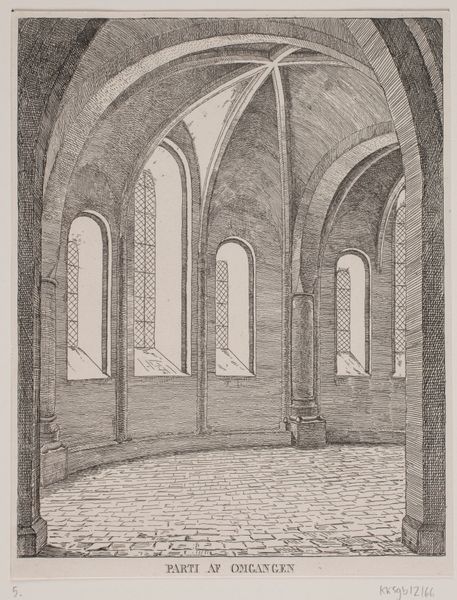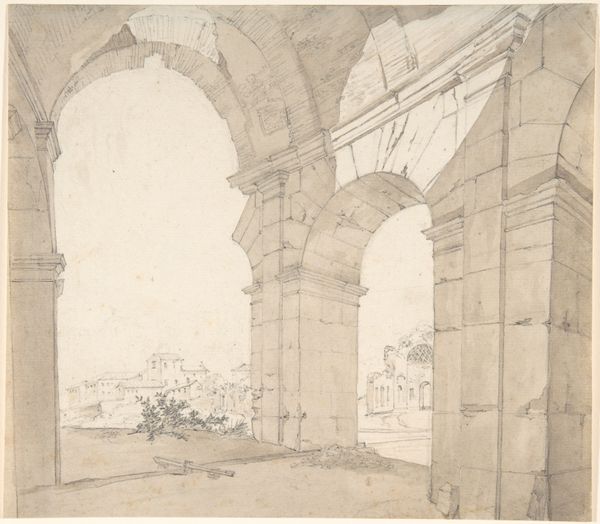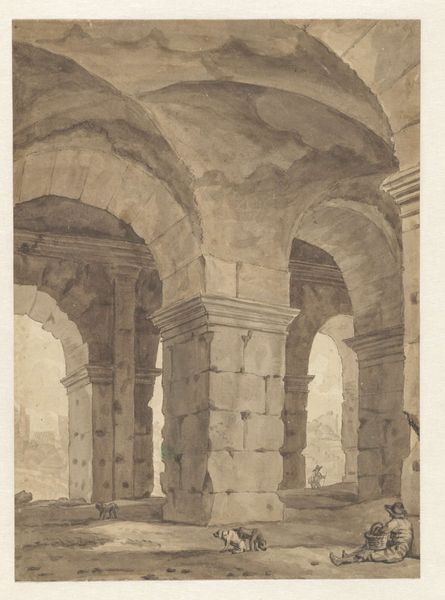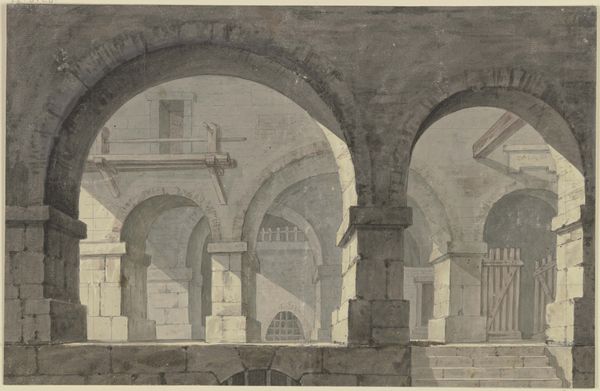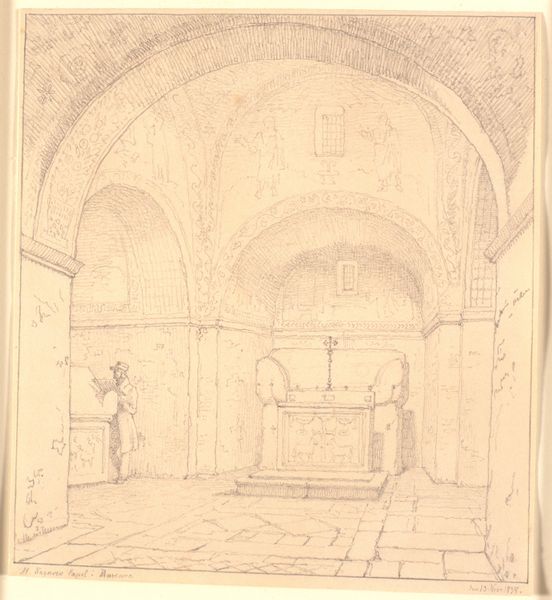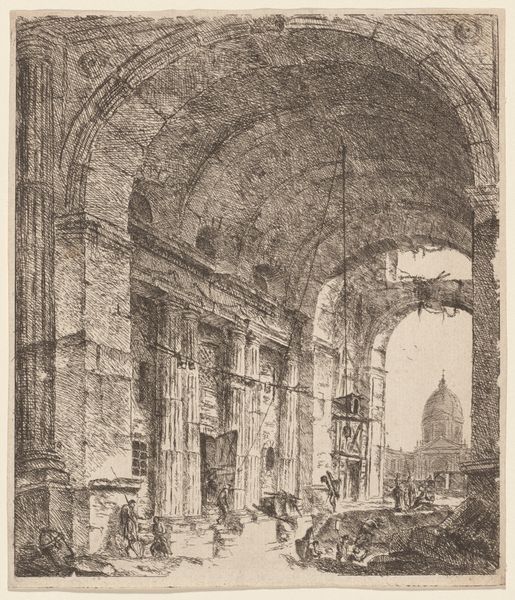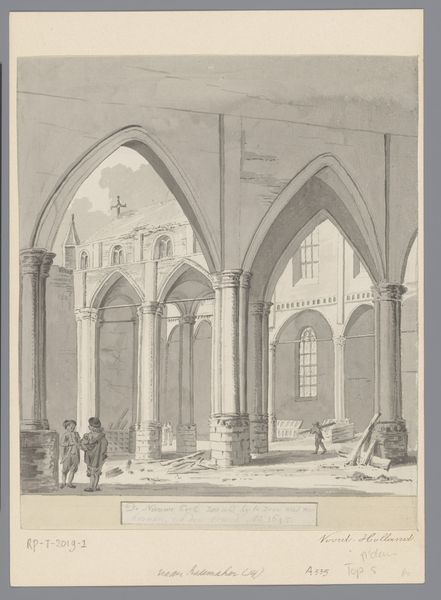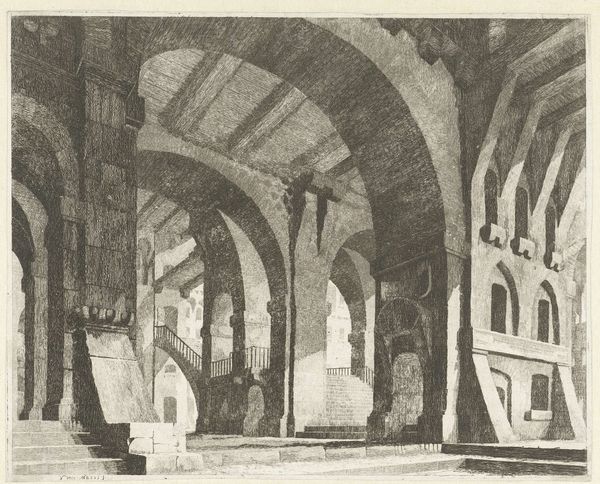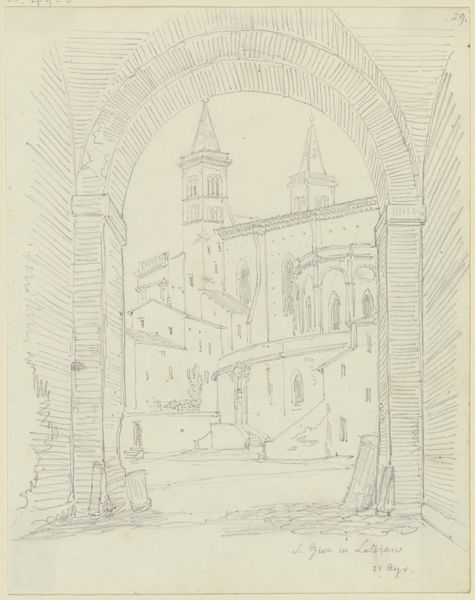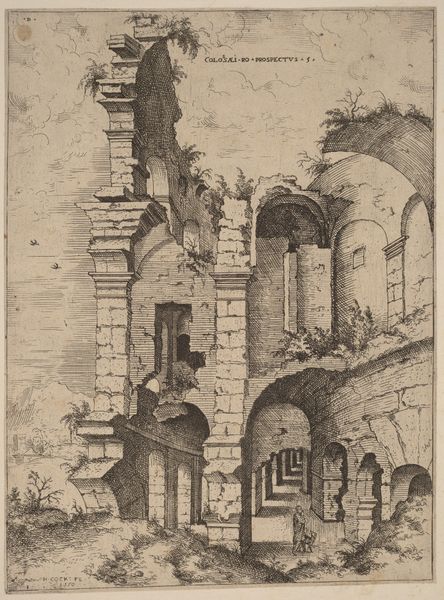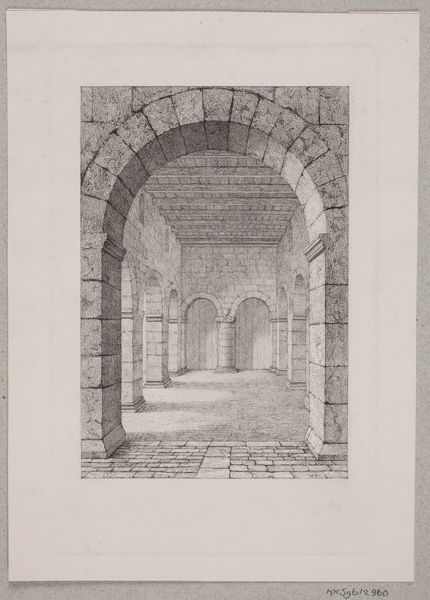
drawing, paper, ink, pencil
#
drawing
#
landscape
#
paper
#
form
#
ink
#
classicism
#
romanticism
#
pencil
#
line
#
cityscape
#
northern-renaissance
#
realism
Dimensions: 180 mm (height) x 157 mm (width) (bladmaal)
This drawing of the Doge’s Palace in Venice was made in October 1838 by Christen Købke. The architectural study is made with graphite on paper, a combination that gives the drawing a silvery-grey tonality. Købke renders the textures of the stone columns and arches with tight, controlled marks, bringing an objective realism to the artwork. The repetitive, linear strokes of the graphite reflect a methodical process, and capture the inherent qualities of the stone – its weight, its permanence, its history. Through the artist’s skilled hand, the drawing becomes more than just a depiction of a place; it becomes a meditation on time, labor, and the built environment. Consider the social context, too. The Doge's Palace stands as a testament to Venice’s history as a powerful trading center. This drawing invites us to consider how the built environment reflects power, commerce, and the complex interplay between art, labor, and society.
Comments
No comments
Be the first to comment and join the conversation on the ultimate creative platform.

